Blockchain technology has transformed the way we perceive and engage with digital transactions. However, the path to mainstream adoption is not without its challenges. At the heart of these challenges lies the “Blockchain Trilemma,” a term used to describe the inherent difficulty in achieving a delicate balance between three crucial aspects: decentralization, security, and scalability.
What is the blockchain trilemma?
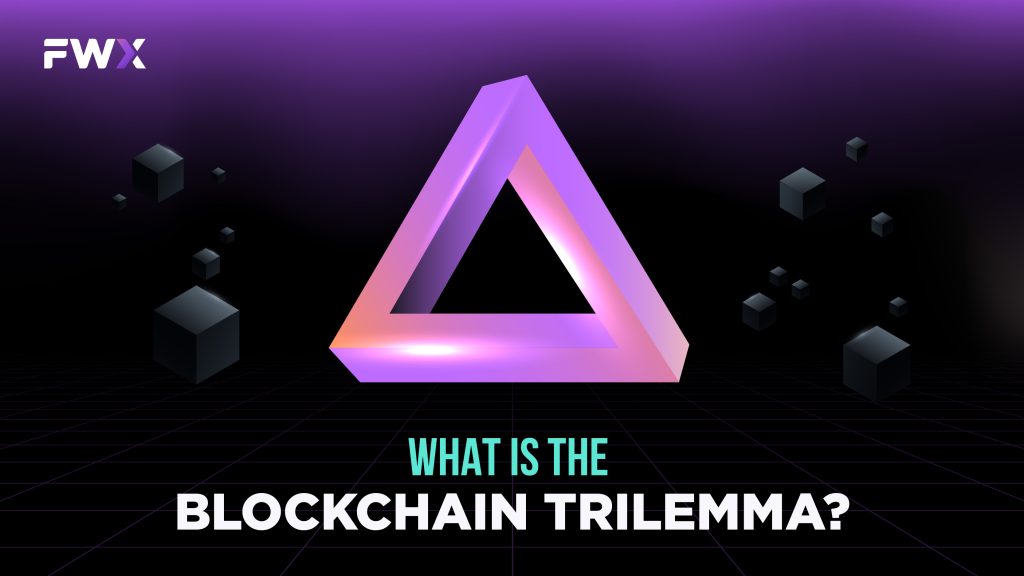
The Blockchain Trilemma refers to the inherent challenge of achieving a delicate balance between three crucial aspects in blockchain technology: decentralization, security, and scalability. These three elements are often seen as a triangle or trilemma, where optimizing one aspect may come at the expense of the others. Balancing these components is crucial for the effective functioning and widespread adoption of blockchain networks.
Three aspects of Blockchain Trilemma
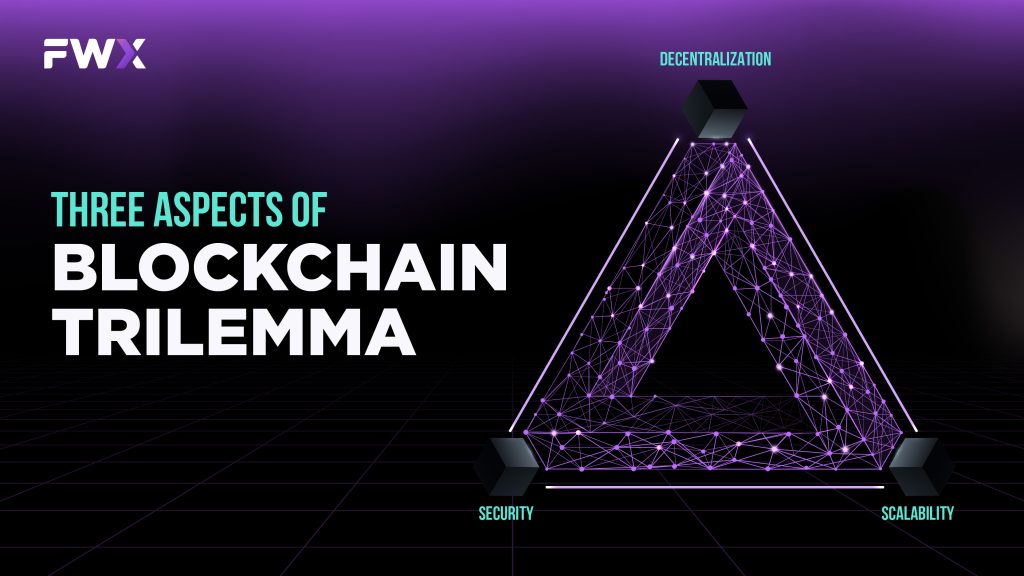
The Blockchain Trilemma encapsulates three fundamental aspects that are crucial to the success and effectiveness of blockchain technology. Let’s delve into each of these aspects:
Decentralization
- Definition: Decentralization refers to the distribution of control and authority across a network of nodes or participants in a blockchain. In a decentralized system, no single entity or group has exclusive control over the entire network.
- Importance: Decentralization is a core principle of blockchain technology. It promotes trust, transparency, and censorship resistance. By eliminating the need for central authorities, such as banks or governments, decentralization aims to create a more inclusive and equitable network where decision-making power is distributed among participants. This ensures that no single point of failure exists, enhancing the system’s resilience and reliability.
Security
- Definition: Security in the context of blockchain involves safeguarding the network against malicious activities, attacks, and unauthorized access. It encompasses measures to ensure the integrity, confidentiality, and availability of data and transactions.
- Importance: Security is paramount for the credibility and adoption of blockchain systems. The decentralized nature of blockchain inherently enhances security by minimizing the risk of a single point of attack. Various cryptographic techniques, consensus mechanisms, and encryption methods are employed to protect against threats such as double-spending, 51% attacks, and other forms of manipulation. A secure blockchain ensures the trustworthiness of the transactions and data stored on the network.
Scalability
- Definition: Scalability is the ability of a blockchain network to handle an increasing number of transactions or users while maintaining optimal performance. A scalable blockchain can efficiently process and validate a growing volume of transactions without compromising speed or efficiency.
- Importance: Scalability is crucial for the widespread adoption and usability of blockchain technology. As more users join the network and transaction volumes increase, the blockchain must scale to accommodate the demand. However, achieving scalability is challenging because increasing the capacity of a blockchain often involves trade-offs with decentralization and security. Balancing scalability with the other two aspects is a key consideration for blockchain developers and researchers.
Solving the Blockchain Trilemma
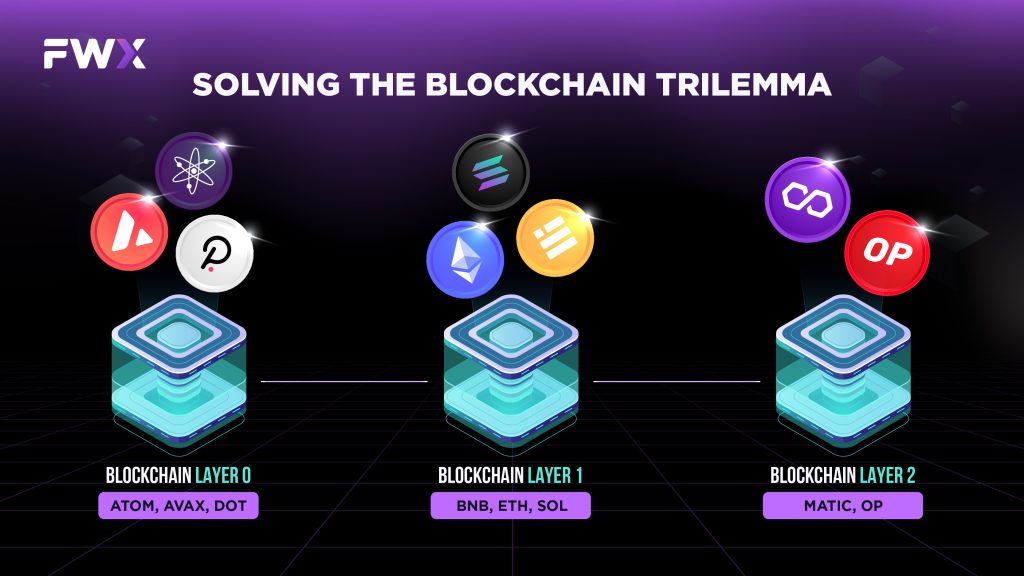
What is Layer 0?
Layer 0 is the bedrock upon which the entire blockchain ecosystem stands. It represents the underlying infrastructure that supports and connects various blockchains. Innovations and enhancements at Layer 0 are designed to address the challenges posed by the Blockchain Trilemma by introducing new architectures and mechanisms.
At Layer 0, the focus is on redefining the fundamentals of how blockchains communicate, collaborate, and coexist. By exploring innovative solutions at this foundational layer, the aim is to pave the way for a more efficient, secure, and scalable blockchain ecosystem.
Relay Chains
Within Layer 0, one of the key components that stands out is the concept of Relay Chains. These chains serve as the backbone of interconnected blockchains, fostering efficient communication and collaboration among diverse blockchain networks.
Key Attributes of Relay Chains:
- Interoperability: Relay Chains enable interoperability by serving as a communication bridge between different blockchains. This interconnectedness allows for the seamless transfer of assets and information across disparate blockchain networks.
- Scalability Solutions: Relay Chains contribute to scalability by facilitating parallel processing of transactions across interconnected blockchains. This not only enhances the overall throughput but also addresses the scalability aspect of the Blockchain Trilemma.
- Consensus Mechanisms: Relay Chains often implement advanced consensus mechanisms that align with the specific requirements of interconnected blockchains. This ensures a harmonious and secure collaboration while maintaining the core principles of decentralization.
- Security Enhancements: By acting as a secure relay for information and transactions, Relay Chains bolster the overall security of the interconnected blockchain ecosystem. They serve as a safeguard against potential vulnerabilities that may arise from cross-chain interactions.
What is Layer 1?
Layer 1 represents the foundational protocol layer of a blockchain. It is the first and most essential layer, shaping the basic structure and functionality of a blockchain network. Innovations at Layer 1 focus on enhancing the inherent properties of the blockchain protocol itself to address the challenges posed by the Blockchain Trilemma.
At this layer, the emphasis is on improving consensus mechanisms, scalability, and security to create a robust foundation for blockchain networks.
Consensus Protocol Improvements
Consensus protocols are the heartbeat of any blockchain, determining how nodes reach agreement on the state of the network. In the pursuit of solving the Blockchain Trilemma, Layer 1 brings forth significant improvements in consensus protocols.
Key Innovations:
- Proof-of-Stake (PoS): PoS is a consensus mechanism that replaces the energy-intensive Proof-of-Work (PoW) with a more energy-efficient model. By allowing nodes to validate transactions and create new blocks based on the amount of cryptocurrency they hold, PoS reduces the environmental impact and enhances scalability.
- Delegated Proof-of-Stake (DPoS): DPoS introduces a democratic element to consensus by allowing token holders to vote for a select group of delegates who will validate transactions and create blocks. This streamlined approach enhances efficiency and facilitates quicker decision-making, contributing to scalability.
- Practical Byzantine Fault Tolerance (PBFT): PBFT is a consensus algorithm that enables nodes to reach agreement even in the presence of malicious actors. Its focus on rapid decision-making and fault tolerance enhances the overall security and performance of the blockchain.
Sharding
Sharding is a revolutionary concept within Layer 1 that addresses the scalability challenge of blockchain networks. Instead of having every node validate every transaction, sharding divides the blockchain into smaller, more manageable parts called shards.
Key Aspects of Sharding:
- Parallel Processing: Sharding enables parallel processing of transactions across multiple shards. Each shard processes a subset of transactions independently, significantly increasing the overall throughput of the network.
- Inter-Shard Communication: Shards communicate with each other through a carefully orchestrated mechanism, ensuring that the state of the entire blockchain remains coherent. This facilitates efficient collaboration between shards while maintaining decentralization.
- Enhanced Scalability: By distributing the workload across shards, sharding dramatically improves the scalability of a blockchain network. This innovative approach allows for the seamless accommodation of a growing number of transactions without sacrificing decentralization or security.
What is Layer 2?
Layer 2 solutions aim to augment and extend the capabilities of existing blockchain protocols. Rather than altering the fundamental layer, Layer 2 builds upon it, introducing mechanisms that optimize scalability and efficiency. The primary goal is to relieve congestion on the main blockchain, facilitating faster and more cost-effective transactions.
Layer 2 innovations are vital in navigating the challenges presented by the Blockchain Trilemma, offering pragmatic approaches to achieve a delicate balance between decentralization, security, and scalability.
Nested Blockchains
Nested Blockchains, a concept within Layer 2, involve the creation of secondary blockchains or child chains that operate alongside the main chain. This hierarchical structure enables a scalable approach to transaction processing.
Key Aspects of Nested Blockchains:
- Isolation of Transactions: Each nested blockchain handles a subset of transactions, ensuring that not all transactions burden the main blockchain. This isolation enhances overall scalability and reduces congestion.
- Efficient Resource Utilization: By compartmentalizing transactions into nested blockchains, resource utilization is optimized. This results in improved throughput and responsiveness, contributing to a more efficient and scalable network.
State Channels
State Channels provide an off-chain solution within Layer 2, enabling participants to conduct a series of transactions off the main blockchain. These channels drastically reduce the load on the main chain while maintaining the security guarantees of the blockchain.
Key Aspects of State Channels:
- Off-Chain Transactions: Participants engage in a series of off-chain transactions within a state channel, minimizing the need for on-chain interactions. This significantly enhances transaction speed and reduces fees.
- Final Settlement on Main Chain: The final state of the transactions is settled on the main chain, ensuring the integrity and security of the entire process. State channels thus offer an efficient way to conduct numerous transactions without clogging the main blockchain.
Sidechains
Sidechains, another Layer 2 innovation, operate as separate blockchains connected to the main blockchain. They offer a distinct environment for specific transactions, providing a scalable solution without directly impacting the main chain.
Key Aspects of Sidechains:
- Customized Functionality: Sidechains can be tailored to accommodate specific use cases or applications, allowing for diverse functionalities that may not be feasible on the main chain.
- Interoperability: Transactions can move seamlessly between the main chain and sidechains, ensuring a cohesive and interconnected blockchain ecosystem. This interoperability contributes to the overall scalability and flexibility of the network.
Rollups
Rollups, a Layer 2 scaling solution, optimize transaction throughput by moving transaction data off the main chain while preserving its security guarantees. There are two primary types of Rollups: Optimistic Rollups and ZK-Rollups.
Key Aspects of Rollups:
- Transaction Data Compression: Rollups compress transaction data, reducing the load on the main chain. This enables a higher throughput of transactions while maintaining the security of the main chain.
- Smart Contract Execution: Rollups execute smart contracts off-chain, with the final state and proofs submitted to the main chain. This allows for efficient processing of complex smart contracts without compromising the efficiency of the main blockchain.
How the Blockchain Trilemma Affects Blockchain Technology
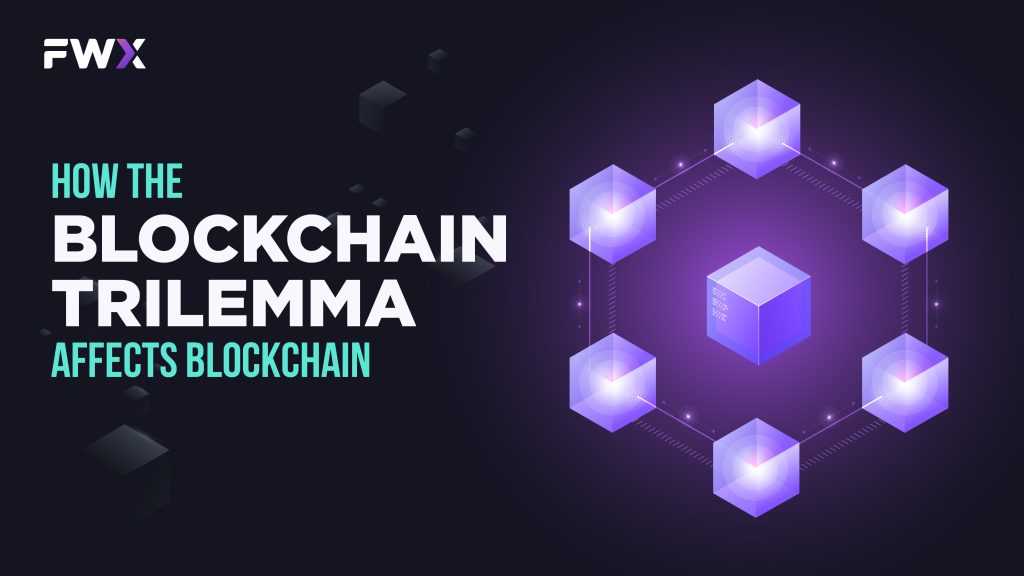
The Blockchain Trilemma, encapsulating the intricate balance between decentralization, security, and scalability, profoundly influences the development, adoption, and evolution of blockchain technology. Understanding how these three aspects interact and impact each other is crucial for comprehending the challenges and opportunities that shape the blockchain landscape.
- Decentralization: The Pillar of Trust
- Challenge: Achieving and maintaining decentralization is a complex task. As blockchain networks grow, the potential for centralization due to factors such as mining concentration or governance issues arises.
- Impact: A lack of decentralization can erode trust in the system. Blockchain’s promise of transparency, censorship resistance, and trustless transactions hinges on the distribution of power. A failure in achieving decentralization compromises these fundamental principles.
- Security: Safeguarding the Ecosystem
- Challenge: Enhancing security without compromising other aspects of the trilemma is challenging. Rigorous security measures often come at the cost of efficiency and scalability.
- Impact: Security is paramount for blockchain technology. Vulnerabilities or compromises in the security infrastructure can result in attacks, fraud, and loss of user trust. The challenge lies in fortifying the system against evolving threats while maintaining a balance with decentralization and scalability.
- Scalability: The Bridge to Mass Adoption
- Challenge: Scaling blockchain networks to handle a growing number of transactions without sacrificing decentralization or security poses a significant challenge.
- Impact: Scalability directly impacts the user experience. Slow transaction speeds and high fees hinder mass adoption. Achieving scalability without compromising the other two aspects is crucial for realizing blockchain’s potential in various industries.
The Future of Blockchain
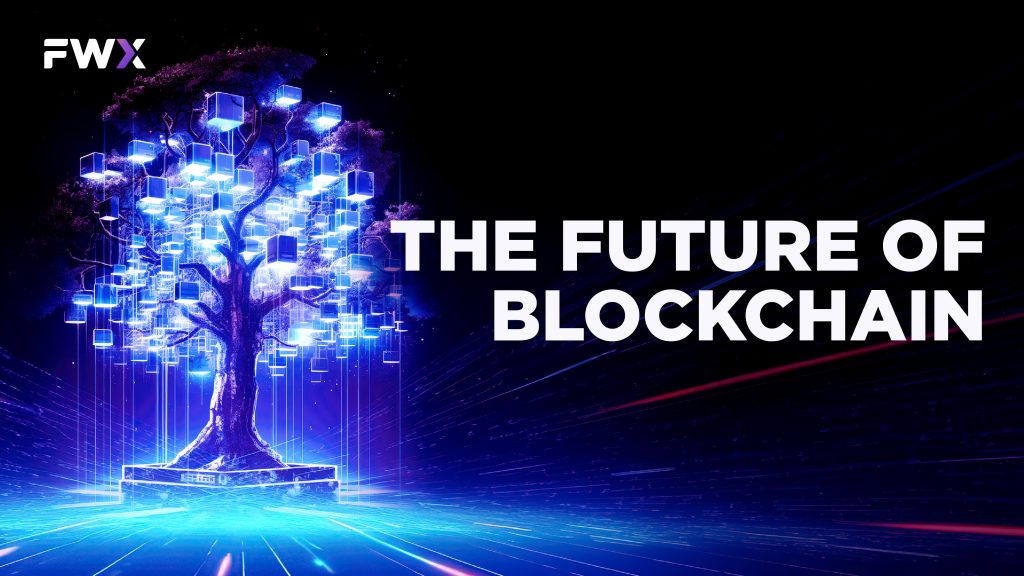
The future of blockchain holds immense promise as the technology continues to evolve and mature. Key trends shaping its trajectory include:
- Interoperability: Efforts to enhance interoperability between different blockchains will foster a more connected and seamless decentralized ecosystem.
- Scalability Solutions: Ongoing innovations at Layer 1 and Layer 2 will address scalability concerns, enabling blockchain networks to handle a higher volume of transactions and achieve mainstream adoption.
- Integration with Traditional Systems: Increasing integration of blockchain with traditional systems will bridge the gap between legacy infrastructure and the decentralized world, unlocking new possibilities for industries.
- Privacy and Security: Advancements in privacy-focused technologies and robust security measures will enhance the trustworthiness of blockchain networks, making them more attractive to businesses and users.
- Tokenization of Assets: The tokenization of real-world assets will gain momentum, offering increased liquidity, transparency, and accessibility in traditional markets.
- Smart Contract Evolution: Smart contracts will evolve to become more sophisticated, versatile, and user-friendly, opening doors to a wider array of decentralized applications and use cases.
- Environmental Sustainability: Growing emphasis on environmentally friendly consensus mechanisms, such as Proof-of-Stake, will address concerns related to the energy consumption of blockchain networks.
- Regulatory Clarity: Clearer regulatory frameworks will emerge globally, providing a more stable environment for blockchain projects to thrive and encouraging broader adoption.
In essence, the future of blockchain is marked by a convergence of technological advancements, increased adoption across industries, and a maturation of the regulatory landscape. As the technology continues to overcome challenges and integrate with existing systems, its transformative impact on various sectors and daily life is poised to accelerate.


